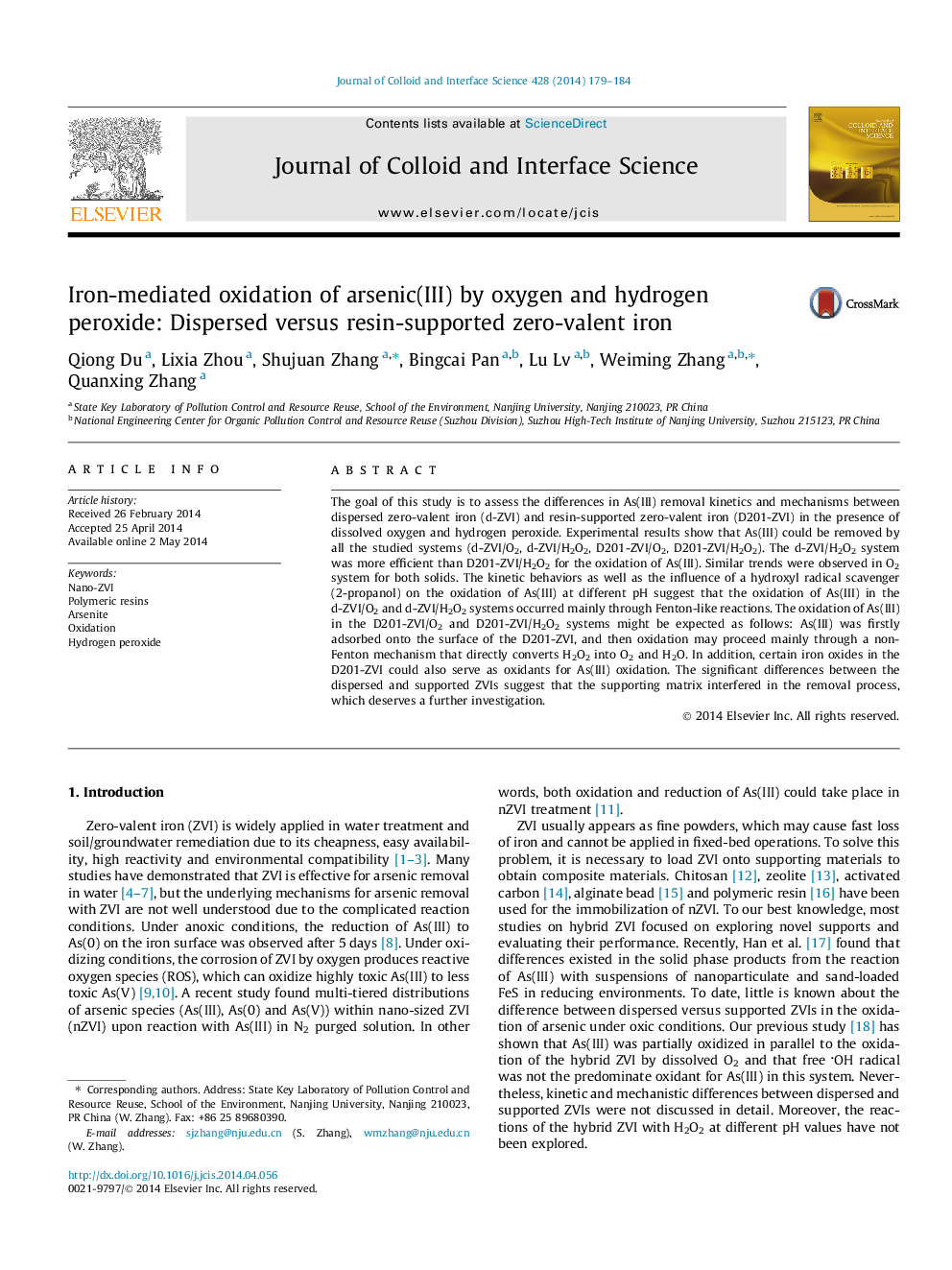| Article ID | Journal | Published Year | Pages | File Type |
|---|---|---|---|---|
| 607241 | Journal of Colloid and Interface Science | 2014 | 6 Pages |
•Both dispersed and resin-supported ZVIs can oxidize As(III) in O2 and H2O2 systems.•As(III) oxidation by dispersed ZVI was mainly through the Fenton-like reactions.•The function of the supported ZVI differs from that of the dispersed ZVI.•The difference suggests that the support matrix interfered in As(III) removal.
The goal of this study is to assess the differences in As(III) removal kinetics and mechanisms between dispersed zero-valent iron (d-ZVI) and resin-supported zero-valent iron (D201-ZVI) in the presence of dissolved oxygen and hydrogen peroxide. Experimental results show that As(III) could be removed by all the studied systems (d-ZVI/O2, d-ZVI/H2O2, D201-ZVI/O2, D201-ZVI/H2O2). The d-ZVI/H2O2 system was more efficient than D201-ZVI/H2O2 for the oxidation of As(III). Similar trends were observed in O2 system for both solids. The kinetic behaviors as well as the influence of a hydroxyl radical scavenger (2-propanol) on the oxidation of As(III) at different pH suggest that the oxidation of As(III) in the d-ZVI/O2 and d-ZVI/H2O2 systems occurred mainly through Fenton-like reactions. The oxidation of As(III) in the D201-ZVI/O2 and D201-ZVI/H2O2 systems might be expected as follows: As(III) was firstly adsorbed onto the surface of the D201-ZVI, and then oxidation may proceed mainly through a non-Fenton mechanism that directly converts H2O2 into O2 and H2O. In addition, certain iron oxides in the D201-ZVI could also serve as oxidants for As(III) oxidation. The significant differences between the dispersed and supported ZVIs suggest that the supporting matrix interfered in the removal process, which deserves a further investigation.
Graphical abstractFigure optionsDownload full-size imageDownload high-quality image (53 K)Download as PowerPoint slide
